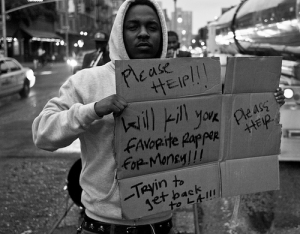“Be Who You Want To Be” is the timeless slogan for the most popular doll in America; shooting for your dreams is one thing, but looking the part is another.
For as long as we can remember, Barbie has stood as a role model for little girls around the world. Barbie has been parodied several times as the “perfect” woman since her launch in 1968, but impressionable girls see her as someone they should emulate. This idol they looked up to came in one size, one height and one model.
Barbie started off as a standard blonde, slender woman with unrealistic body measurements that falsely represented women worldwide. If the original Barbie model were a real human, her body proportions would not be able to support functioning organs. According to an article by the Huffington Post, Barbie’s waist would be 19 inches smaller than the average U.S. woman.
Barbie then became a career-focused model for children. Taking forms such as Barbie the policewomen, Barbie the doctor and Barbie the athlete, she quickly set the career standards high for little girls. However, mixing career aspirations and an unrealistic body image does not send a clear message. Are the uniforms what really define her or is it the shape of her body when the clothes come off?
It wasn’t until this past week that Barbie launched their new line of dolls that resemble what women actually look like. Now in 2016, Mattel has finally stepped up their game. The Barbie Fashionista collection has three new body types, seven skin colors, 22 eye colors and 24 hairstyles. The new campaign slogan is “Imagination comes in all shapes and sizes. That’s why the world of Barbie is evolving.”
Barbie’s much-needed “makeover” transforms her into a girl with various realistic body types to offer. A “petite” doll is now offered along with a “tall” and “plus size” doll, each one possessing a variety of different features that make them all beautifully unique.
It’s important for little girls to know they can still become that policewoman or doctor regardless of the way they look on the outside. Even if this change doesn’t clarify that it is what’s on the inside that matters, it minimally expresses to younger girls that what’s on the outside doesn’t.
Being different isn’t a bad thing, and this major change to something that stands as such a public figure to kids all over the world is a huge step out of the “dream house” and into the right direction.




